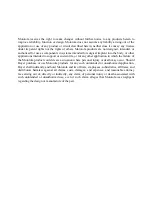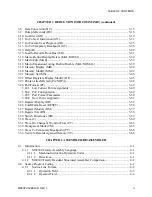
GENERAL INFORMATION
M68CPU32BUG/D REV 1
1-3
1.3 USING THIS MANUAL
Those users unfamiliar with debugging packages should read Chapter 1 before attempting to use
CPU32Bug. This provides information about CPU32Bug structure and capabilities.
Paragraph 1.4 Installation and Start-up describes a step-by-step procedure for powering up the
module and obtaining the CPU32Bug prompt on the terminal screen.
For questions about syntax or operation of a particular CPU32Bug command, turn to the
paragraph which describes that particular command in Chapter 3.
Some debugger commands take advantage of the built-in one-line assembler/disassembler. The
command descriptions in Chapter 3 assume that the user is familiar with the
assembler/disassembler functionality. Chapter 4 includes a description of the assembler/
disassembler.
NOTE
In the examples shown, all user inputs are given in bold text. This should clarify
the examples by distinguishing between character input by the user and character
output by CPU32Bug. The symbol <CR> represents the carriage return key on the
user’s terminal keyboard. Whenever this symbol appears it indicates a carriage
return should be entered by the user.
1.4 INSTALLATION AND START-UP
Use the following set-up procedure to enable CPU32Bug to operate with the BCC:
1. Configure the jumpers on the BCC module. Refer to the EVK User’s Manual
Motorola publication number M68332EVK/AD1 or M68331EVK/AD1.
2. Connect the DB-9 serial communication cable connector to the terminal or host
computer which is to be the CPU32Bug system console. Connect the other end of the
cable to P4 on the BCC.
Set up the terminal as follows:
•
Eight bits per character
•
One stop bit per character
•
Parity disable
•
9600 baud rate


























